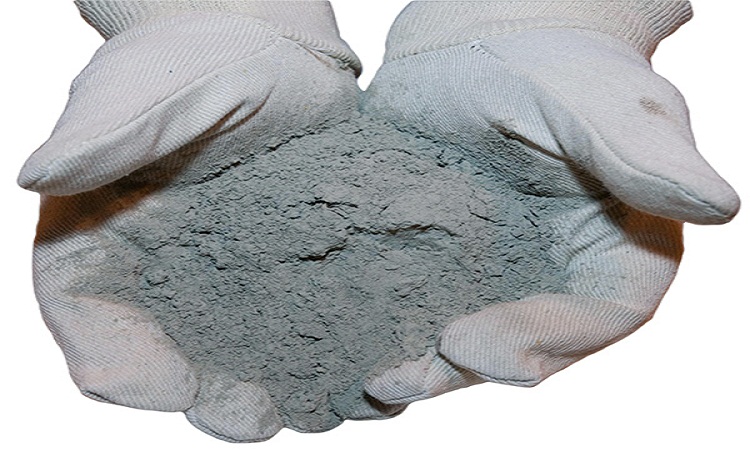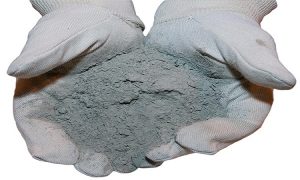What are the benefits and constraints of fly ash in concrete?
Key benefits
- Reduced water demand
- Increased workability
- Improve permeability
- Improve durability
- Low heat of hydration
Constraints
- Reduced early strength
- Longer curing
The major beneficial effect of fly ash in concrete is based on its physical properties.
Filler effect
Fly ash fills voids in the fresh concrete normally filled with water, reducing the water content of the mix. The reduction of water demand partially compensates for the reduced early strength. On the other hand, it is essential to consider this effect as concrete produced with usual water contents leads to a dramatic strength loss because of too much water in the mix.
Ball-bearing effect
The spherical particles in the fly ash act as ball bearings between the cement and aggregate particles resulting in good workability, pumpability, and finishibility of the concrete.
Effects of fly ash based on mineralogical effects are as follows:
Pozzolanic reaction
Fly ash reacts with Ca(OH)2 of the cement hydration process to form additional Calcium Silicate Hydrates (CSH) and contributes to strength. This reaction is slower than the cement hydration but gives additional strength at 28 days and continues to gain strength at later ages also. Early strength is reduced. In contrast to cement hydration fly, ash can react over the lifetime of the concrete if enough water is provided in the concrete. The strength contribution is therefore a continuous process lasting over years. Foundation plates or hydro dams produced with high volumes of fly ash show a constant strength gain over years.
Durability
Pore refinement
The formation of additional CSH phases through the pozzolanic reaction of the fly ash results in a denser matrix of the concrete. The pores are smaller and hinder the transport of water including detrimental constituents like sulfates or chlorides into the concrete.
Pore blocking effect
Pores are blocked by newly formed fly ash CSH phases inhibiting the ingression of water and detrimental constituents such as sulfates and chlorides.
Chemical effect
The consumption of Ca(OH)2 through the pozzolanic reaction of the fly ash reduces the sensibility of concrete to sulfate attack as Ca(OH)2 is a component of Ettringite responsible for the expansion process.
The carbonation process, reducing the pH value in the surface region of the concrete and reducing the alkaline pacifying effect for the steel rebars, is also slowed down due to the reduced Ca(OH)2 content which is the component of Calcite formed through reaction with CO2 in the carbonation process.
Chloride diffusion is actively suppressed by fly ash through binding processes of fly ash with chloride ions forming insoluble salts.
What are the detrimental effects of Fly Ash?
Early strength
Due to the lower reactivity of fly ash compared to OPC the early strength is reduced. Especially when fly ash is intermixed, the decrease can be considerable. The reduction level directly depends on the fineness of fly ash and its content. Reduction of strength correlates linearly with substitution level up to 30%. Higher percentages lead to higher reduction levels. Constant fly ash content strength reduction reduces about 10% per 10% decreasing fineness.
When fly ash is interground with clinker, higher fineness can compensate for early strength loss. Fly ash with a high reactive silica and CaO content is best for mechanical activation. Fineness above 4500 Blaine has a detrimental effect on the performance of fly ash as coarser spherical particles are destroyed and thereby ball-bearing effect is lost, increasing the water demand.
In concrete, the strength loss can be compensated by reducing the water content as it directly affects the compressive strength. Depending on the fineness and morphology of the fly ash, the water reduction can be in the range of 5-10%.
The properties of fly ash control its end-use in civil engineering applications. The important influencing parameters are:
Fineness
Indicator for the number of glassy particles and spherical morphology of the fly ash, the finer the more. Minimum fineness is 320 m2/kg and 200 m2/kg required for use in cement and concrete respectively. (IS 3812 -Parts 1& 2)
LOI
The loss of ignition (LOI) is a measurement of the amount of unburnt carbon remaining in the fly ash. It is one of the most significant chemical properties of fly ash, especially as an indicator of suitability for use as a cement replacement in concrete. IS 3812 restricts LOI max 5% for its acceptance. LOI influences chemical admixture dosage in concrete.
Reactive SiO2 (Amorphous)
Indicator for pozzolanic reactivity. The higher the value, the fly ash is more reactive. It can overcome low fineness in case it is interground.
SO3
It is restricted to a max of 3% in case of usage in cement and 5% max. in case of concrete.
Alkalies
Beneficial to activate fly ash, detrimental regarding AAR reaction.
P2O5
Concentration above 1% may lead to set retardation.
Bulk density
It’s lower than cement (30%-50%). To be considered regarding transport volumes and silo dimensioning.
Free CaO/Free MgO
In concentration above 1% detrimental to soundness.
CaO reactive (non-free lime or sulfate/alkali bound)
High reactive CaO content as an indicator for high reactivity of glass phases.
CO2Emission
CO2 emission is also an issue that can mainly be solved with the integration of mineral components. Formerly an abstract term has now become a financial factor about planned commitment to CO2 reduction. The latest news indicates a price range per M.T of CO2 between 15 and 75 Euros.
Fly ash is adding values to products provided proper selection and control to ensure a constant quality of these “power products”.
Taking all this into consideration, fly ash is a high-value reliable mineral component.
Handling/Quality control of Fly Ash
Handling
For the handling of fly ash, the same equipment as that for cement can be used but with some modifications.
Fly ash has a higher dust emission, is highly compactable, and is less sticky than cement. It can be very fluid, partially thixotropic making mechanical handling difficult. Fly ash has a 30%-50% lower bulk density, which has to be considered for transport and storage capacities.
Storage
Steel and concrete silos are the most common facilities used for dry fly ash storage. Steel silos are used up to 3000t capacity, concrete silos range from 5000-100000t capacity. Several feeding and discharge systems are used. Mainly pneumatic systems are used but also mechanical (screw conveyors, bucket elevators) are in use. Fly ash consolidates when stored for longer periods. Therefore, the discharge of silos requires aeration of the outlet cone by jets or aeration mats. Fly ash with higher free lime contents or highly reactive glass phases can start to hydrate over time in case of higher humidity or water contact.
Flat storage is not used due to discharge problems. Handling with front-end loaders is not possible due to dust emission.
Handling in big bags can be an alternative to bulk in case smaller volumes of fly ash are required (max.30000t/y). Big bags require lower investments in loading, transport, and storage equipment.
Loading/Unloading
Unloading equipment is pressurized or vacuum systems as commonly used for cement.
For transport capacities, a lower bulk density compared to cement has to be considered. Bulk densities are in the range of 0.7 g/cm3 -1.0 g/cm3, which means a 30%-50% transport volume reduction compared to OPC. The abrasiveness of the fly ash depends on the quartz content and Fe-content and can be considerably high.
Loading silos with telescopic chutes are best feasible for silo truck loading.
Transport
Transport should be only in closed vessels, silo trucks, and pneumatically. The use of mechanical equipment is not recommended due to the high dust emission and flowability of fly ash. Trucks used can be silo trucks used for cement but also less sophisticated solutions as transformed petrol trucks, a container like trucks can be suitable. Dedusting equipment has to be installed to prevent dust emission during loading.
Conveying
Fly ash has to be conveyed in closed systems. Mechanical conveyors like screws or elevators are feasible. Due to the high fluidity of fly ash, the ascending slope should not be too high for slopes, bucket elevators easily overflow due to the fluid ability of the fly ash. Besides that, pneumatic systems like pipes or air slides are best suited for fly ash handling. Air slides should have a minimum slope of 7º-8º.
Abrasiveness in pipe joints or screws can be considerable depending on the quartz content of the fly ash and its fineness. Pneumatic transport can be done in normal and dense phases.
Quality control
Quality control is key to ensuring long-term consistency and standard compliance of the fly ash produced.
Depending on the installations in the power plant different setups of quality control can be feasible.
Disposal and market sources
In the past, fly ash produced from coal combustion was entrained in flue gases and dispersed into the atmosphere. This created environmental & health concerns that prompted laws that have reduced fly ash emissions to less than 1% of ash produced. In the entire world, more than 65% of fly ash manufactured from coal power stations is disposed of in landfills & ash ponds. In India alone, fly ash landfill covers an area of 40,000 acres (16,000 ha).
The recycling of fly ash has become an increasing concern in recent years because of increasing landfill costs & current interest in sustainable development. Environmental benefits to recycling fly ash include reducing the demand for virgin materials that would need quarrying and substituting for materials that may be energy-intensive such as Portland cement.
The utilization of fly ash as a partial replacement for Portland cement is generally limited to Class F fly ash. It can replace up to 30% by mass of Portland cement and can add to the concrete’s final strength and increase its chemical resistance and durability. Recently concrete mix design for partial cement replacement with High Volume fly ash (50% cement replacement) has been developed. For Roller Compacted Concrete (RCC) used in dam construction, replacement values of 70% have been achieved with processed fly ash at the Ghatghar Dam project in Maharashtra, India.
Fly ash particles being spherical can also increase the workability of cement while reducing water demand. The replacement or substitute of Portland cement with fly ash is considered by its promoters to reduce the greenhouse gas “footprint” of concrete, as the production of one ton of Portland cement produces approximately one ton of carbon dioxide (CO2) as compared to zero CO2 being produced using existing fly ash.
Conclusion
Considered in the past as a waste material, recent research has proved that fly ash is an invaluable ingredient of cement and concrete and hence can be termed as a resource material rather than waste. Otherwise considered as a waste material, Fly ash helps improve the durability of the structure in which it is used and thereby helps in sustainable development.


